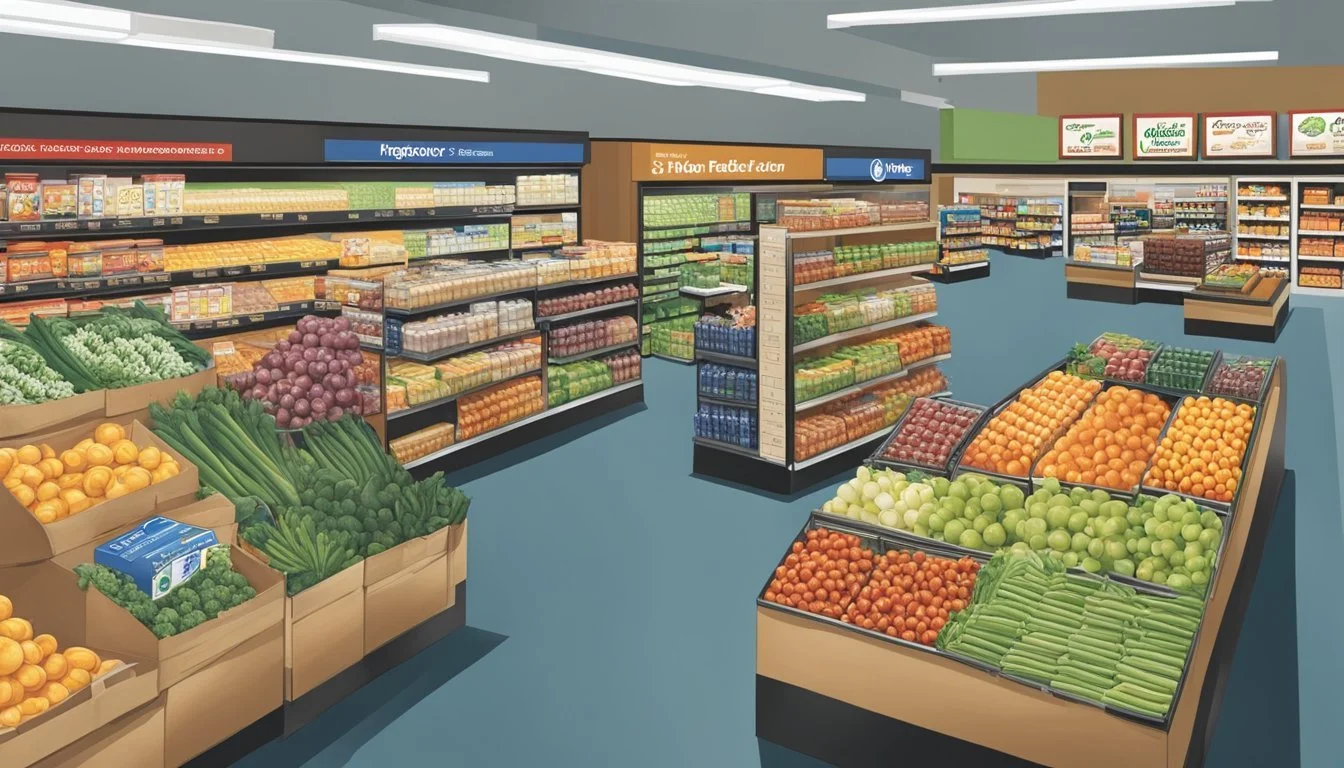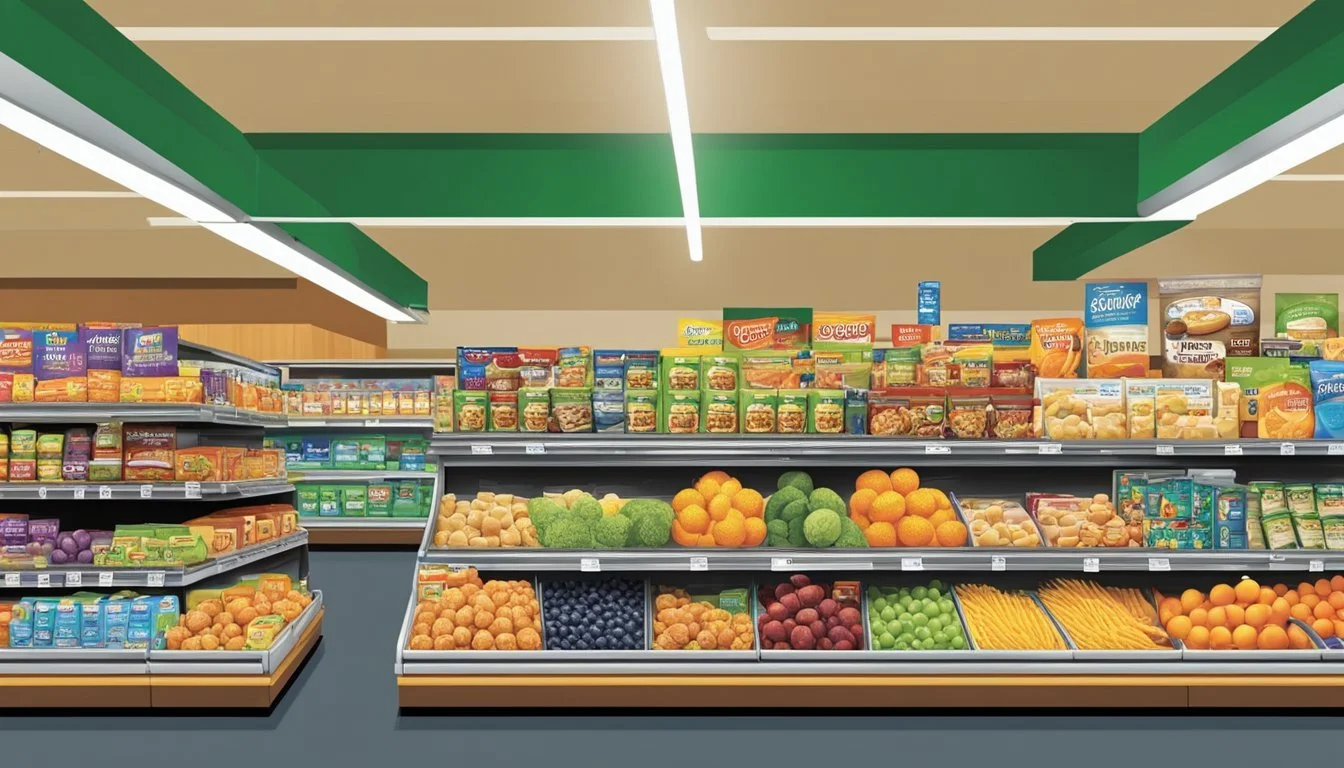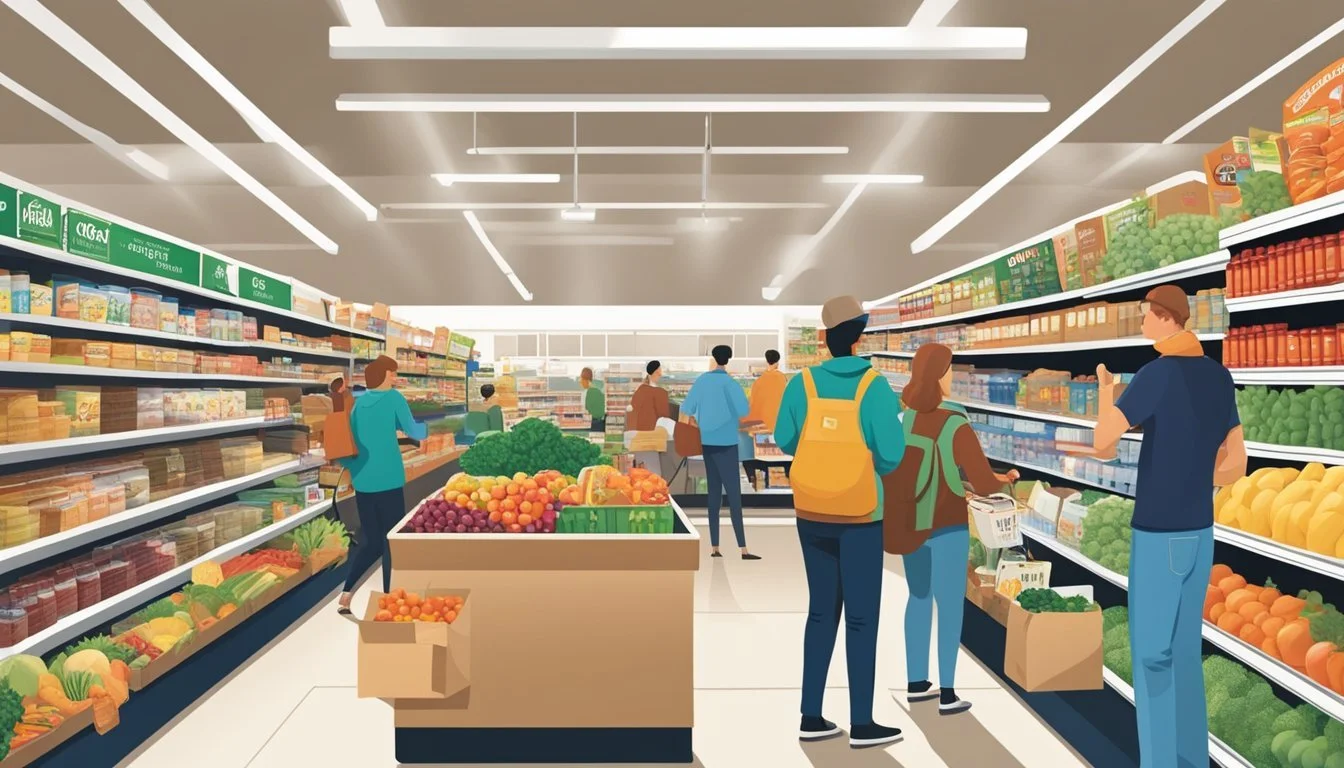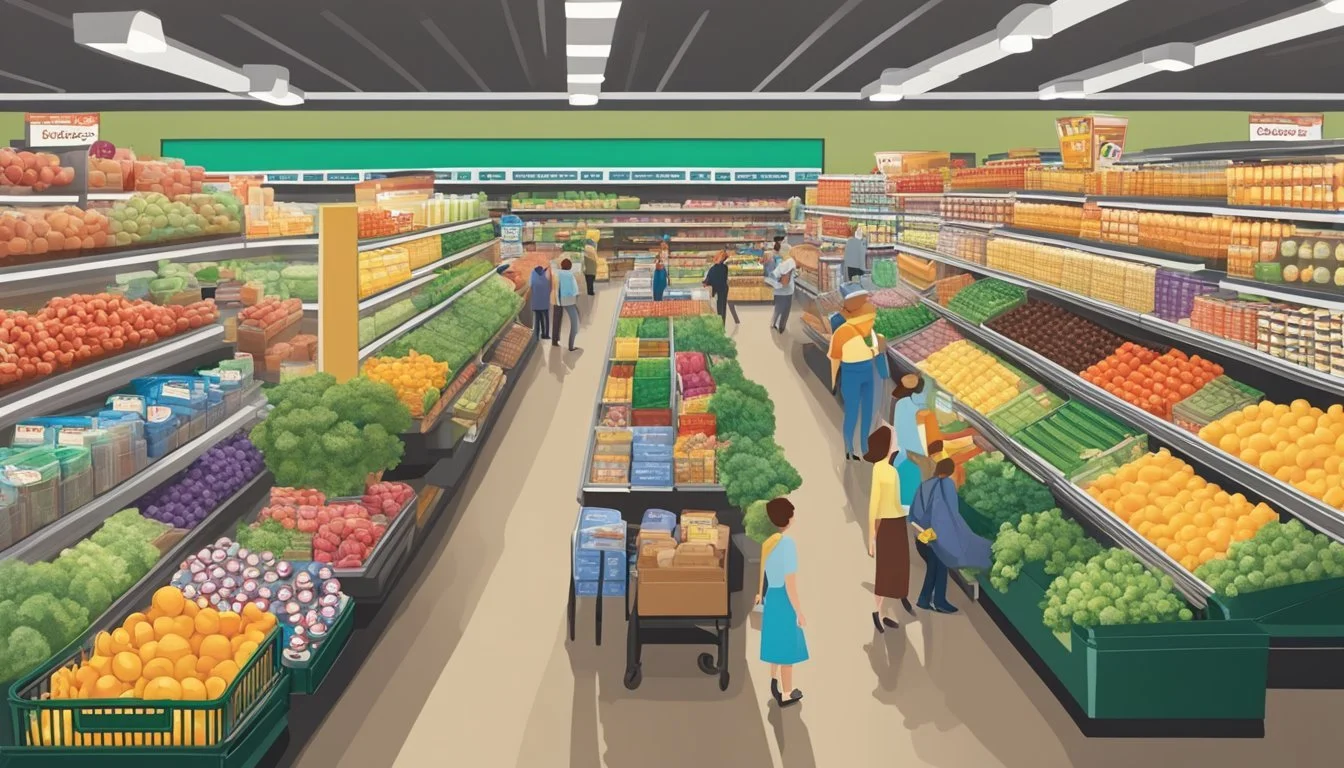Hannaford vs Kroger
A Comprehensive Comparison of Prices, Quality, and Selection
Grocery shopping is a weekly ritual for many households, with the choice of store playing a crucial role in the experience. Hannaford and Kroger are two prominent supermarket chains that cater to different regions of the United States, each with its own unique offerings and customer base.
Hannaford tends to excel in providing high-quality, fresh produce and local products, while Kroger is known for its wide selection and competitive pricing. Both stores strive to meet the diverse needs of their customers through various services, including online ordering, curbside pickup, and loyalty programs.
The decision between Hannaford and Kroger often comes down to personal preferences, location, and specific shopping needs. Factors such as product quality, store cleanliness, customer service, and overall value play significant roles in determining which grocery store better suits individual shoppers.
Company Backgrounds
Hannaford and Kroger are two major players in the American grocery industry. Both companies have rich histories spanning over a century, evolving from small local businesses into regional powerhouses.
History of Hannaford
Hannaford's roots trace back to 1883 when Arthur Hannaford began selling produce from a cart in Portland, Maine. The business quickly grew, opening its first store in 1902.
By 1920, Hannaford Brothers Company had become a successful wholesale grocery distributor. The company expanded into retail in 1944, opening its first supermarket.
Hannaford innovated in the 1960s by introducing in-store pharmacies. Throughout the 1970s and 1980s, the company continued to grow through acquisitions and new store openings.
In 2000, Hannaford was acquired by Delhaize Group, now part of Ahold Delhaize. Today, Hannaford operates over 180 stores across five Northeastern states, known for its fresh produce and commitment to local suppliers.
History of Kroger
Kroger's story began in 1883 when Barney Kroger invested his life savings to open a grocery store in Cincinnati, Ohio. His business philosophy of "Be particular. Never sell anything you would not want yourself" guided the company's growth.
By 1902, Kroger had expanded to 40 stores and its first bakery. The company continued to innovate, becoming the first grocery chain to have its own meat departments in 1904.
Kroger went public in 1928 and survived the Great Depression through strategic mergers. Post-World War II, the company pioneered the superstore concept, combining grocery and general merchandise.
Today, Kroger is the largest supermarket chain in the United States, with nearly 2,800 stores across 35 states. The company is known for its wide selection, private label brands, and digital initiatives.
Store Coverage and Locations
Hannaford and Kroger have distinct geographical footprints, with Hannaford focused on the Northeast while Kroger has a much broader national presence. Their store locations reflect different regional strategies and expansion patterns.
Hannaford's East Coast Presence
Hannaford operates primarily in five northeastern states: Maine, New Hampshire, Vermont, Massachusetts, and New York. The chain has a strong presence in the Boston area and other major cities across these states.
Hannaford boasts over 180 stores, with the highest concentration in Maine, where the company was founded. Its stores are typically found in suburban and rural areas, as well as some urban locations.
The company has focused on deepening its market share in existing territories rather than expanding to new regions. This strategy has allowed Hannaford to build strong brand recognition and customer loyalty in its core markets.
Kroger's National Footprint
Kroger has a much larger geographical reach, with nearly 2,800 stores across 35 states. The company operates under various banners, including Kroger, Ralphs, Dillons, Smith's, and Fred Meyer.
Kroger's strongest presence is in the Midwest and South, with significant coverage in states like Ohio, Georgia, and Texas. The company has also expanded into western states such as California and Washington.
Unlike Hannaford, Kroger has pursued aggressive expansion through acquisitions and mergers. This strategy has allowed the company to enter new markets and increase its national market share.
Kroger's stores range from small neighborhood markets to large supercenters, catering to diverse customer needs across urban, suburban, and rural areas.
Product Range and Availability
Hannaford and Kroger offer diverse product selections to cater to various customer needs. Both chains feature exclusive store brands and a wide array of groceries, including fresh produce, meats, dairy, and organic options.
Exclusive Brands at Hannaford
Hannaford's private label products include the Hannaford, Taste of Inspirations, and Nature's Place brands. These store-exclusive offerings span multiple categories, from pantry staples to fresh foods. Nature's Place focuses on organic and natural products, while Taste of Inspirations provides premium, gourmet options.
Hannaford also carries My Essentials, a value-oriented line designed to compete with national brands on price. The chain's commitment to local sourcing is evident in its "Close to Home" program, which highlights products from regional producers.
Exclusive Brands at Kroger
Kroger boasts an extensive lineup of exclusive brands, including Simple Truth, Private Selection, and Kroger Brand. Simple Truth is dedicated to natural and organic products, offering over 1,400 items across various departments. Private Selection presents premium, gourmet options for discerning shoppers.
The Kroger Brand serves as the chain's main store brand, covering a broad range of everyday groceries and household items. HemisFares, another Kroger exclusive, focuses on authentic, imported foods from specific regions around the world.
Overall Product Selection Comparison
Kroger generally offers a larger product range compared to Hannaford. With approximately 70,000 products, Kroger provides customers with extensive choices across all departments. This vast selection includes a diverse array of national brands, store brands, and specialty items.
Hannaford, while offering fewer total products, maintains a strong focus on fresh produce, meats, and local offerings. The chain emphasizes quality over quantity, particularly in its produce and prepared foods sections. Both stores stock organic options, but Kroger's Simple Truth line may provide a broader organic selection.
In terms of specialty diets, both chains offer products for various needs, including gluten-free, vegan, and keto-friendly options. Kroger's larger size often translates to more variety in these categories.
Price and Value for Money
Comparing prices between Hannaford and Kroger reveals key differences in their pricing strategies and value offerings. Both chains employ various tactics to attract budget-conscious shoppers while aiming to provide quality products.
Everyday Prices at Hannaford vs. Kroger
Hannaford consistently offers lower everyday prices compared to many competitors. Studies show Hannaford's prices are typically 11% below the average of surveyed stores. This translates to significant savings for regular shoppers.
Kroger's everyday prices tend to be competitive but vary by location. The chain uses data-driven pricing to adjust costs based on local markets. While not always the cheapest option, Kroger maintains reasonable prices across a wide range of products.
For a family spending $250 weekly on groceries, choosing the lower-priced store could save over $1,000 annually.
Discounts, Sales, and Loyalty Programs
Both chains use promotions and loyalty programs to provide additional value. Hannaford offers a digital coupon program and weekly specials. Their My Hannaford Rewards program provides personalized deals and points on store-brand purchases.
Kroger's loyalty program is more extensive. The Kroger Plus Card offers:
Digital and paper coupons
Fuel points for discounts at Kroger gas stations
Personalized deals based on shopping history
Cash back on Kroger brand items
Kroger also runs frequent sales and uses loss leaders to draw customers. These tactics can lead to significant savings for savvy shoppers who plan their purchases around promotions.
Price Comparison of Common Items
A price comparison of common grocery items reveals mixed results between the two chains. Hannaford often has lower prices on produce and meat. For example:
Bananas: $0.49/lb at Hannaford vs $0.59/lb at Kroger
Ground beef (80% lean): $3.99/lb at Hannaford vs $4.29/lb at Kroger
Kroger may have better prices on packaged goods and national brands:
Cheerios (18 oz): $3.99 at Kroger vs $4.29 at Hannaford
Tide liquid detergent (100 oz): $11.99 at Kroger vs $12.49 at Hannaford
Prices can vary by location and change frequently. Shoppers should compare current local prices for their specific needs to determine the best value.
Quality and Freshness
Hannaford and Kroger both prioritize quality and freshness in their grocery offerings. Their standards for produce, meats, and prepared foods impact customer satisfaction and loyalty.
Fresh Produce
Hannaford emphasizes locally sourced produce when possible, partnering with regional farmers to stock fresh fruits and vegetables. Their produce departments feature clear labeling of origin and harvesting dates. Kroger, with its larger scale, offers a wider variety of produce options, including organic and conventional choices. Both chains implement rigorous quality control measures, inspecting incoming shipments for freshness and appearance.
Hannaford's "Fresh Guarantee" allows customers to return any unsatisfactory produce for a full refund. Kroger employs a similar policy, demonstrating commitment to customer satisfaction. Both stores rotate stock regularly to ensure peak freshness on shelves.
Meat and Seafood Standards
Hannaford's meat department focuses on antibiotic-free and hormone-free options, particularly in their Nature's Place brand. They offer a selection of sustainably sourced seafood, clearly marked with origin information. Kroger's meat counters provide a broader range of choices, from value-priced options to premium cuts.
Both chains maintain strict temperature controls and sanitation practices in their meat and seafood departments. Kroger's Simple Truth organic line includes various meat options for health-conscious consumers. Hannaford and Kroger train their butchers and seafood staff to provide expert advice and custom cuts upon request.
Quality Control in Store-Prepared Foods
Hannaford's deli and bakery departments prepare many items in-store daily, emphasizing freshness. Their Kitchen section offers ready-to-eat meals made with high-quality ingredients. Kroger's larger stores often feature more extensive prepared food options, including hot bars and made-to-order stations.
Both chains adhere to strict food safety protocols in their preparation areas. Kroger's culinary innovation teams regularly develop new recipes to keep their prepared food offerings current. Hannaford focuses on classic, familiar dishes with consistent quality. Both stores monitor customer feedback closely to maintain and improve their prepared food standards.
Customer Shopping Experience
Hannaford and Kroger offer distinct shopping experiences, with each chain excelling in different areas. Both stores prioritize customer satisfaction but approach it in unique ways.
Store Layout and Cleanliness
Hannaford stores are known for their clean and well-organized layouts. Aisles are typically wide and uncluttered, making navigation easy for shoppers. The produce section is often prominently displayed, showcasing fresh fruits and vegetables.
Kroger stores vary in layout depending on location, but generally feature a logical flow. Some customers report that certain Kroger locations can feel cramped during busy times. Both chains maintain high cleanliness standards, with regular cleaning schedules throughout the day.
Checkout Efficiency
Kroger has invested heavily in technology to improve checkout efficiency. Many locations offer self-checkout options and mobile payment systems. Some stores have implemented "Scan, Bag, Go" technology, allowing customers to scan items as they shop.
Hannaford focuses on personalized service at checkout. While they also offer self-checkout options, they emphasize having adequate staff to keep lines moving quickly. Both chains strive to minimize wait times, but approaches differ based on store size and customer volume.
Customer Service
Hannaford prides itself on friendly, attentive customer service. Staff members are often praised for their helpfulness and product knowledge. The company invests in employee training to ensure consistent service across locations.
Kroger's customer service can vary by store, but the chain has made efforts to improve in recent years. They've implemented customer feedback systems and employee recognition programs. In Consumer Reports surveys, Kroger typically receives average ratings for service, while Hannaford often scores higher in this area.
Additional Services and Features
Hannaford and Kroger offer a range of services beyond basic grocery shopping. These include convenient delivery options and in-store amenities designed to enhance the customer experience.
Grocery Delivery Options
Hannaford partners with Instacart to provide home delivery services. Customers can order groceries online or through the Instacart app for same-day delivery. Hannaford To Go allows shoppers to order online and pick up their groceries curbside at select locations.
Kroger offers its own delivery service, Kroger Delivery, available in many markets. They also provide a Pickup option for online orders. Kroger has partnered with Instacart in some areas to expand their delivery reach.
Both stores offer subscription services for frequent delivery users, providing free delivery on qualifying orders.
In-Store Amenities
Hannaford stores often feature pharmacies, offering prescription services and health consultations. Many locations include full-service delis, bakeries, and seafood counters.
Kroger stores typically offer a wider array of in-store amenities. These may include:
Pharmacies
Fuel centers
Banking services
Floral departments
Starbucks cafes
Murray's Cheese shops
Wine and beer tastings
Kroger's larger format stores sometimes house clothing departments and home goods sections. Both chains provide self-checkout options for customer convenience.
Sustainability and Community Involvement
Both Hannaford and Kroger have made strides in sustainability and community engagement. These grocery chains focus on environmental initiatives and supporting local products and charities.
Environmental Initiatives by Hannaford and Kroger
Hannaford has set impressive sustainability standards. In 2009, their Cony Street store became the first supermarket in North America to achieve Platinum LEED certification. This store incorporates eco-friendly features and energy-saving systems.
Hannaford also tackles food waste through innovative recycling programs. They partner with Agri-Cycle to maximize the value of unsold food, demonstrating a multifaceted approach to sustainability.
Kroger has implemented its own green initiatives. The company focuses on reducing energy consumption and increasing recycling efforts across its stores. They have also committed to eliminating single-use plastic bags in their locations.
Both chains prioritize offering plant-based options to cater to eco-conscious consumers.
Supporting Local Products and Charities
Hannaford and Kroger actively support their local communities. They stock products from local farmers and producers, helping to boost regional economies.
Hannaford's "Close to Home" program highlights locally sourced items in their stores. This initiative supports family farms and small businesses in the areas they serve.
Kroger operates a similar program called "Kroger Local," which showcases products made within each store's state or region. This approach helps reduce transportation costs and supports local economies.
Both chains contribute to local charities and food banks. They organize food drives and provide financial support to community organizations focused on hunger relief and nutrition education.
Market Position and Competitor Comparison
Kroger and Hannaford occupy distinct positions in the competitive grocery landscape, with each chain facing unique challenges and opportunities. Their market presence, customer loyalty, and adaptation to industry trends shape their standing against rivals.
How Hannaford and Kroger Fare Against Competitors
Kroger stands as the largest supermarket chain in the United States by revenue, commanding approximately 10% of the market share. With $132.5 billion in sales reported in 2020, Kroger's dominance is evident. The company competes directly with other national chains like Albertsons, which operates 2,252 stores across 34 states.
Hannaford, while smaller in scale, maintains a strong regional presence in the Northeast. It faces competition from local chains such as Market Basket, ShopRite, and Big Y. Both Kroger and Hannaford contend with the growing threat of non-traditional grocery retailers like Walmart, Target, and Aldi, which have expanded their food offerings.
Customer Loyalty and Market Trends
Kroger has invested heavily in customer loyalty programs and digital initiatives to retain its customer base. The company's data-driven approach allows for personalized offerings and targeted promotions, enhancing customer engagement.
Hannaford focuses on building loyalty through its emphasis on fresh, local products and community involvement. This strategy resonates well with its New England customer base, who value regional connections.
Both chains are adapting to market trends such as increased demand for organic and natural foods, competing with specialized retailers like Whole Foods Market. They are also expanding their online ordering and delivery services to meet the growing preference for convenience among shoppers.
Conclusion
Hannaford and Kroger both offer distinct advantages for grocery shoppers. Hannaford stands out for its focus on fresh, local products and commitment to sustainability. The chain's smaller store formats provide a more intimate shopping experience.
Kroger excels in its expansive product selection and competitive pricing. The company's large network of stores and strong private label offerings give customers many options. Kroger's digital initiatives and loyalty program also enhance the shopping experience.
For customers prioritizing organic and natural foods, Hannaford may be the better choice. Those seeking the lowest prices and widest variety might prefer Kroger. Location and personal preferences play a key role in determining which store better suits individual needs.
Both supermarkets maintain high standards for food safety and customer service. They each strive to meet the evolving demands of modern grocery shoppers through technology integration and expanded services.
Ultimately, the "better" store depends on individual priorities. Shoppers are encouraged to visit both chains to compare offerings, prices, and overall experience firsthand.










